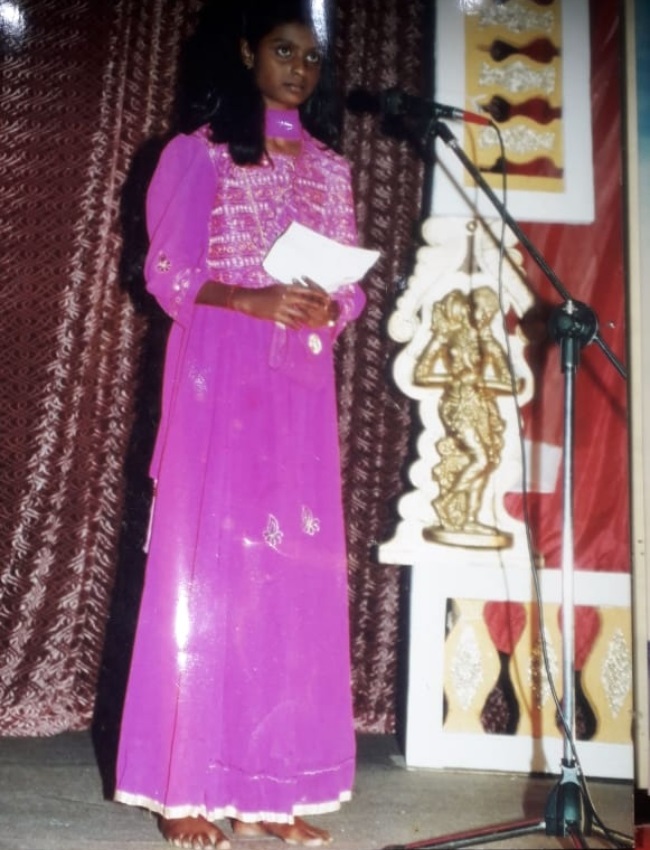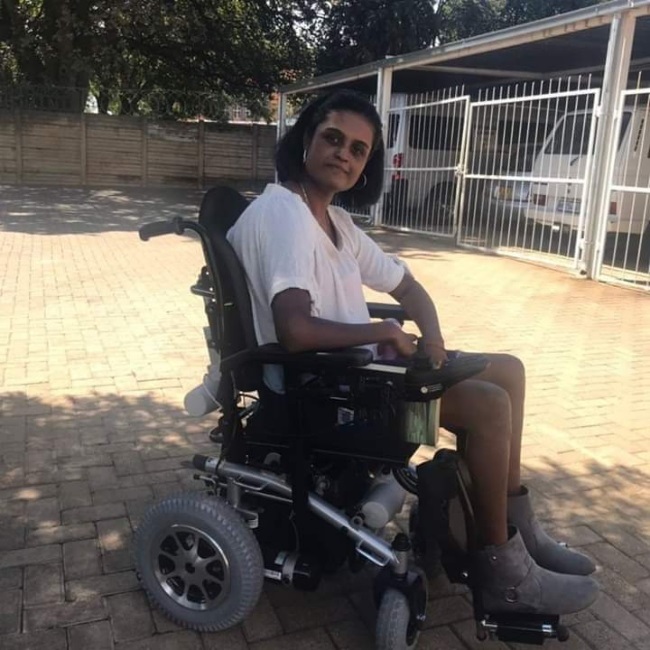
Nevonia Moodley was just 12 years old when she was diagnosed with Friedreich’s ataxia, a rare genetic disorder that damages the spinal cord and nerves and leads to diabetes, fatigue and chronic pain. The 32-year-old from Chatsworth in KwaZulu-Natal tells us her story.
“I was a loud and flamboyant child. I was very outgoing, fun and vibrant, and always full of energy and full of life.
I grew up like any ‘normal’ child: running around, playing with other kids, and climbing trees. I loved acting, taking part in school plays, storytelling competitions, speeches and dancing, and I even did modelling at one point.
At the age of 12, I had flu for two weeks. I had the usual flu symptoms, so my parents didn’t worry about it. When I returned to school, the nurses noticed that I was unusually thin, and that I was walking differently to other kids my age. They referred me to hospital.
The doctors had me go for blood tests and numerous scans and other tests. In that short period of time, I was transferred to three different hospitals in Durban. When they couldn’t find the problem, my blood work and the results from all the tests and my doctors’ feedback were sent to Cape Town. The doctors there analysed everything again, did some more research, and finally had a diagnosis.
I had Friedreich’s Ataxia.
READ MORE | Free State father and son suffer from extremely rare condition that’s slowly robbing them of their mobility
There’s no treatment for the condition and a cure is yet to be found. I was given pain medication to help ease the constant pain in my neck, head, back and shoulders. I also took multivitamins and calcium tablets daily.
At first, I took no notice of my diagnosis and I continued going about life the same way that I always had – until I got scared because I started struggling to do small things like walking down a flight of stairs, or taking notes in class. I was also becoming unusually tired, and my anger and frustration at myself was overwhelming.
It all happened quite gradually, but my condition is deteriorating which means that over time, I’ll get worse, and probably be bedridden, which isn’t something I’m looking forward to.
I started high school the year following my diagnosis at Southlands Secondary School, a mainstream school for able-bodied learners. Everyone was very accommodating towards me.
Because of my condition, I’m now diabetic and I’m on medication to control it. I also have high cholesterol, and I developed scoliosis, which is the curving of the spine. And last but not least, my legs – the nerves, muscles, bones and joints – have gotten weaker.
By the time I started university I needed to use a wheelchair.
My parents tried to show me that everything was okay and nothing had changed in our lives, but as time went by it got harder to keep up that charade, and soon the emotions started to show.
It was extremely difficult for them to accept it. I started bottling up all my emotions and feelings, the anger and frustration, until one day it all became too much and I exploded.
I did my own research on my disorder to understand what’s wrong with me. Since then, I’ve grown immensely as a person and never looked back. I enrolled at Unisa, and between 2008 to 2015 I studied for a national higher certificate in accountancy, a national diploma in internal auditing, and a course in counselling.
In 2016, I moved to Johannesburg to begin a new life, without family or friend. I loved it there. But due to COVID-19 and other unforeseeable circumstances, I had no choice but to return to Durban in 2020.
In 2020, I received a fully paid bursary to study through The Tax Faculty. Tax wasn’t my favourite subject but it was online, which suited my lifestyle. I’ve now obtained an occupational diploma as a tax technician.
At the start of this year, I published my first book, My Life, My Rules – My Style, My Attitude*.
I started writing it when I was 28, after many friends had encouraged me to tell my story. It’s the story about my life until I was 25; how my illness was discovered and diagnosed; everything I had to overcome, and my thoughts and feelings that made me into the person I am today.
It was the first time in the 15 years since my diagnoses that I found the courage to speak out. Writing the book was my therapy.
I’m not married and don’t have kids. Yes, there are days when I don’t even want to get out of bed. But then I think if I don’t do it for myself, who will? I prefer doing things by myself for as long as I still can, no matter how slowly it goes.
I'm currently unemployed. My parents and my caregiver help me with hygiene and minimal chores. My dad doesn’t want me to work, because, he says, ‘As long as I’m around, you don’t have to worry about anything.’
I want financial security. I crave freedom and independence. I’ve slowly had to accept that, which was extremely difficult. But I also look back at how far I’ve come, and I motivate myself by saying, ‘One last time!’
I am, and always will be mentally fit and capable, and that’s the one thing I’m glad about.
My disability affects me physically and the pain and discomfort are part of it, but now I can deal with my misfortune in a better and more positive way.”
*It’s self-published and available on Amazon as a print-on-demand copy and on Kindle as an ebook, and it’s also sold on other ebook platforms for R150.
Peripheral nerves, which carry information from the brain to the body, and the cerebellum, a small region of the brain that aids movement and coordination, are affected by the illness. These parts start to degenerate, resulting in trouble moving your body, heart issues, scoliosis, and diabetes.
Early symptoms include difficulty walking, weariness, poor balance, chest pain, and muscle weakness. Symptoms start to show in those between the ages of 5 and 15.
There is no cure for the disorder. However, there are treatments one can use. When your hearing becomes damaged, you can use hearing aids. Medication can be used to treat diabetes and heart problems. Scoliosis and foot abnormalities can be treated with braces.
Extra sources: hopkinsmedicine.org, ninds.nih.gov




 Publications
Publications
 Partners
Partners




















